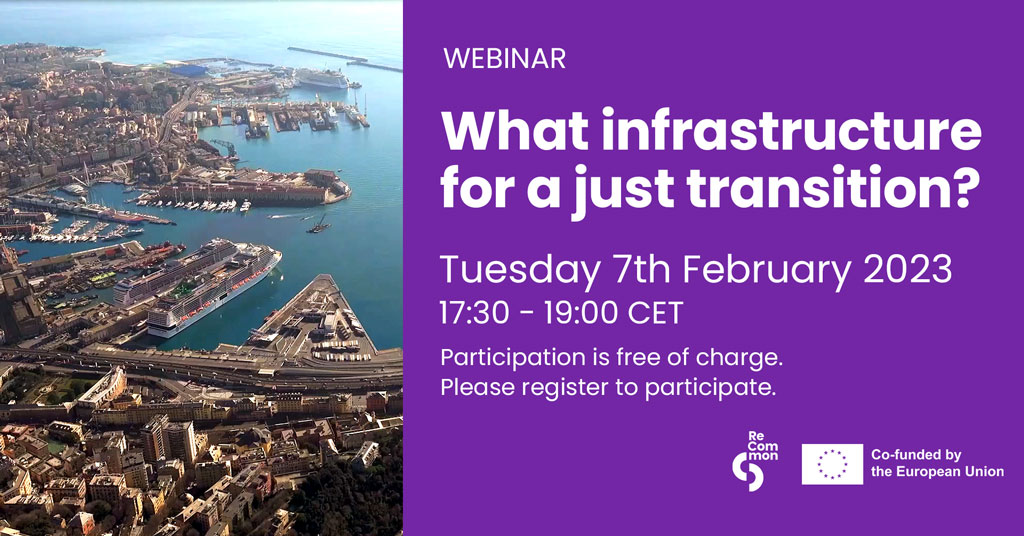
The European Recovery and Resilience Facility provides a major injection of public funding into the Member States’ economies. It has been presented as a green response to the economic crisis following the Covid-19 pandemic. Regrettably, a glance at the various national recovery and resilience plans (NRRPs), as well as other public investments proposed by governments, reveals a rather different situation: often characterised by mega-infrastructure defined long before the pandemic; somehow functional to an environmentally, climatically and socially unsustainable economic model; and decided without sufficient participation by local communities, which risk exacerbating the crisis instead of fostering its transformation in terms of social justice.
During the meeting, we took a look at two major Italian infrastructure plans: the new breakwater in Genoa, funded by the Italian recovery plan, and the widening of the Bologna highway bypass, a public infrastructure presented as a symbol of ecological transition. We also turned our gaze to Estonia, with the Estonian Green Movement’s testimony on the Rail Baltica infrastructure, also funded by the Estonian recovery plan. We discussed some alternative proposals, based on an economic, climate and social justice perspective.
Speakers:
- Filippo Taglieri, ReCommon: The case of the new breakwater in Genoa
- Maurizio Würtz, Biologist: The impact of the breakwater on the marine environment and biodiversity
- Luca Tassinari, Comitato “No Passante” (Bologna): Reasons for the No and bottom-up alternatives
- Johanna Kuld, Estonian Green Movement: Recovery and Resilience Facility funding for the controversial Rail Baltica
Moderator of the meeting: Eva Pastorelli, CEE Bankwatch Network.
Recording from the webinar ‘What infrastructure for a just transition?‘

